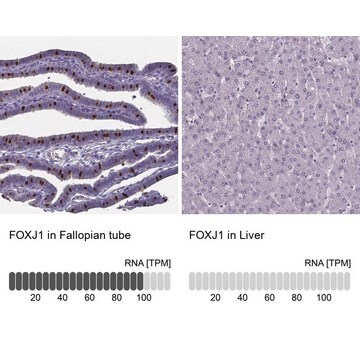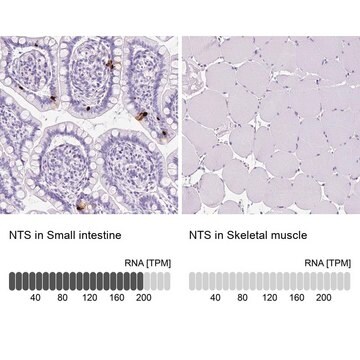MABS275
Anti-Gli3 Antibody, clone 5E1
clone 5E1, from mouse
Synonym(s):
Transcriptional activator GLI3, GLI3 form of 190 kDa, GLI3-190, GLI3FL, GLI3 C-terminally truncated form, GLI3 form of 83 kDa, GLI3-83
About This Item
Recommended Products
biological source
mouse
Quality Level
antibody form
purified immunoglobulin
antibody product type
primary antibodies
clone
5E1, monoclonal
species reactivity
mouse, human
technique(s)
immunocytochemistry: suitable
immunohistochemistry: suitable
western blot: suitable
isotype
IgMκ
NCBI accession no.
UniProt accession no.
shipped in
wet ice
target post-translational modification
unmodified
Gene Information
human ... GLI3(2737)
Related Categories
General description
Specificity
Immunogen
Application
Immunohistochemistry Analysis: A representative lot detected Gli3 in mouse embryo cross-sections (Laht, S., et al. (2008). Hybridoma. 27(3):167-174.).
Signaling
Developmental Signaling
Quality
Western Blotting Analysis: A 1:1,000 dilution from a representative lot detected in Gli3 in 10 µg of human thymus tissue lysate.
Target description
Physical form
Storage and Stability
Analysis Note
Human thymus tissue lysate
Disclaimer
Not finding the right product?
Try our Product Selector Tool.
Storage Class Code
10 - Combustible liquids
WGK
WGK 2
Flash Point(F)
Not applicable
Flash Point(C)
Not applicable
Certificates of Analysis (COA)
Search for Certificates of Analysis (COA) by entering the products Lot/Batch Number. Lot and Batch Numbers can be found on a product’s label following the words ‘Lot’ or ‘Batch’.
Already Own This Product?
Find documentation for the products that you have recently purchased in the Document Library.
Our team of scientists has experience in all areas of research including Life Science, Material Science, Chemical Synthesis, Chromatography, Analytical and many others.
Contact Technical Service








